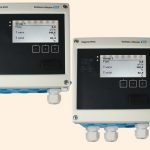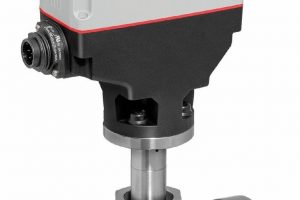Measurements of heat quantities in water and steam are common in many industrial sectors. Although these measurements are standard procedures in industrial plants, plant operators often wonder how best to maximise measurement accuracy when upgrading instruments or purchasing new equipment.
The author: Thomas Knapp Product Manager Components, Recording Technology and E-direct, Endress+Hauser
Well installed steam measurement systems deliver accuracy ratings of approximately 2 % in practical use. Measurements of heat quantities in water can achieve an accuracy of 1 % where installation is perfect and depending on the temperature difference. How is this accuracy achieved? The possible ways in which to optimise depend on the energy carrier.
The flow measurement is the main source of error in steam measurements. Vortex flowmeters are recommended for accurate measurements. However, flow measurements using orifice plates are very common. If the calculation of the flow rate is based on square root extraction of the differential pressure signal, measurements are only accurate at the installation point of the orifice plate. Even slight fluctuations in temperature and pressure can produce errors of up to 10 % in the flow measurement alone. It is better to calculate the flow rate based on the differential pressure as well as the current temperature and pressure. The installation point is then adapted to the conditions and the measurement retains an accuracy of <1 % even in the event of fluctuations. In the case of saturated steam, there is also the risk that the steam will turn into wet steam. This can result in an error of up to 80 %. The use of pressure and temperature measurements is recommended here in order to protect plants from hydraulic shocks. Endress+Hauser developed EngyCal RS33 for saturated steam applications and applications involving superheated steam. The steam meter performs calculations based on the IAPWS-IF97 international standard and also reports when steam turns into wet steam.
Paired sensors
The temperature difference is an important parameter for water and other liquids. If the difference between the forward and return flows is greater than 20 °C, the flow measurement is the main contributing factor to the error. If the temperature difference is smaller than 20 °C, the deviation between the temperature sensors has a critical bearing on the accuracy. Paired sensors must be used in such applications. The EngyCal RH33 energy manager is the ideal solution in this case. By entering the Callendar-Van Dusen coefficients, two sensors can be paired electronically. This pairing is more accurate than pairing based on selected sensors. Furthermore, if one sensor fails, only this sensor needs to be replaced and not both sensors. This ensures time and cost savings. The Callendar-Van Dusen coefficient defines the actual relationship between the resistance and the temperature in PT100 sensors.
Measured values recorded on site
Customer requirements were central to the development of the EngyCal energy managers. The EngyCal RH33 combined heat and cold meter and EngyCal RS33 steam meter allow accurate recording and calculation of energy values as well as calculations of heat and cold. The RH33 system was developed for applications with water, water-glycol mixtures and other liquids such as thermal oils while RS33 is used for steam. The housing is suitable for field, panel or top-hat rail mounting. Commissioning is fast and easy since the inputs for flow, pressure and temperature are predefined. All the required values are easily read from the backlit display. It is possible to define up to four display groups, which can be shown alternately. Data recording is available in the device as standard, so that load curves and all measured values can be recorded on site in such a way that they are tamper-proof.
Water and steam values are calculated in accordance with the IAPWS-IF97 international standard. Other liquids such as thermal oils are calculated using heat capacity tables. EngyCal RH33 and RS33 also offer greater flexibility in use. For example, bidirectional measurements or measurements in different tariff counters can be implemented very easily. EngyCal RS33 has an integrated option for measuring the flow rate in condensate that enables the steam heat difference to be calculated. Both EngyCal models support electronic pairing of temperature sensors using the Callendar-Van Dusen coefficients, with the result that the heat quantity calculation is very accurate providing the temperature differences are small. EngyCal RH33 is certified in accordance with MID004 for custody transfer measurement of the heat quantity in liquids. Various communication options are provided. M-Bus, Modbus RTU or Modbus TCP can be selected directly as the bus system. An Ethernet interface also exists for reading out data or connecting the devices to a control system via an OPC server. The unit is put into operation using the integrated USB interface.
Optimising energy measuring points
The Applicator Sizing Energy module on the Applicator page of Endress+Hauser’s website (http://www.endress.com/applicator) supports the optimisation of energy measuring points. It helps to quickly identify the change that will have the greatest impact on the accuracy of a measurement. Once the expected operating conditions and accuracy of the devices have been entered, the Applicator calculates the heat quantity and probable accuracy assuming optimal installation of the measurement technology.
All errors in the entire measuring chain and the consequences of the calculation are taken into account in accordance with the IAPWS-IF97 standard. If the accuracy of one measuring point is altered, the effect of this change on the overall accuracy can be seen directly. For example, if the measurement accuracy of a pres-sure transmitter is adjusted from 0.5 to 0.08 % during a steam measurement, the error can be reduced from 3.19 to 1.17 %.
cpp-net.com/0112431
Share:








